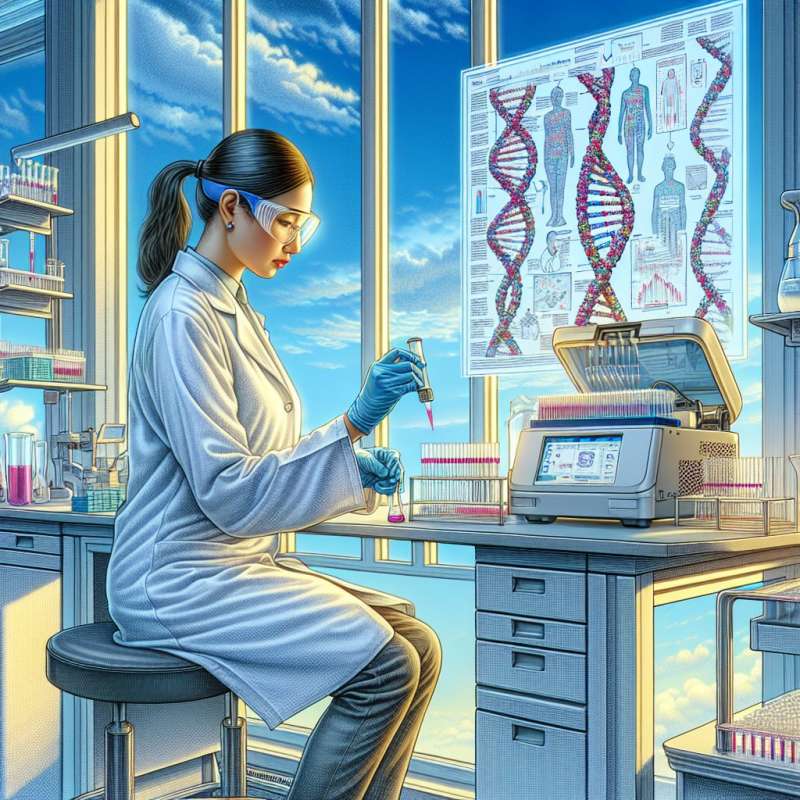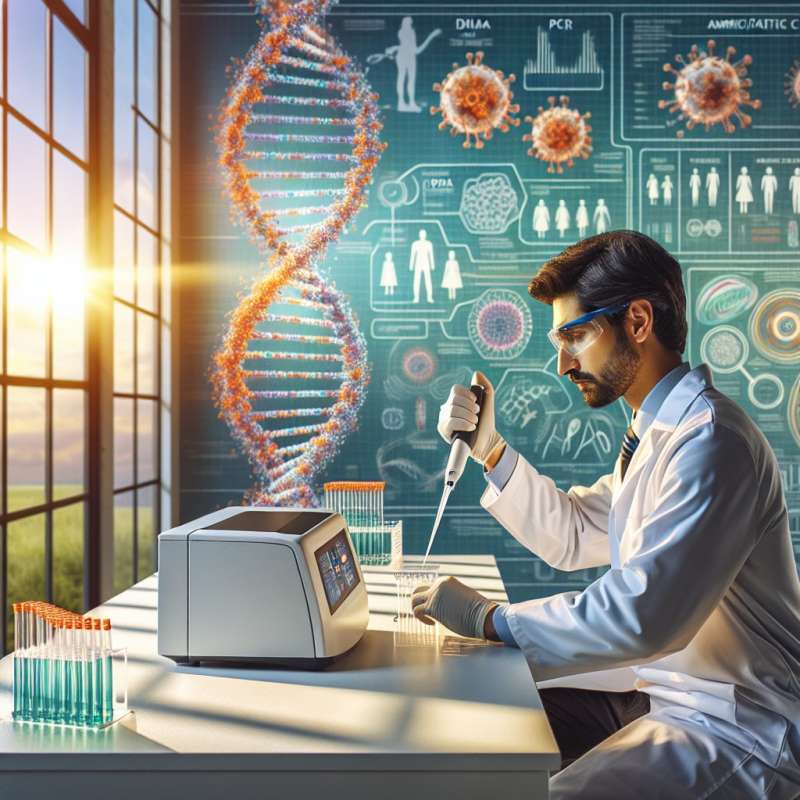
PCR Introduction
Polymerase Chain Reaction (PCR) is a revolutionary molecular technique invented by Kary Mullis in 1983. It amplifies specific DNA sequences, making millions of copies from a minute amount of DNA in just hours.
PCR Components
Four key ingredients are required: template DNA containing the target sequence, DNA primers, DNA polymerase, and nucleotides. The choice of polymerase, like Taq, is crucial for the reaction's temperature tolerance and fidelity.
Thermal Cycling Process
PCR involves repeated cycles of temperature changes. Denaturation splits the DNA helix, annealing allows primers to bind, and elongation synthesizes new DNA strands. Typically, 30-40 cycles are performed.
PCR Variants
PCR has several variants for different purposes: RT-PCR for RNA analysis, qPCR for quantitative results, and multiplex PCR for multiple targets. Each method leverages the basic PCR steps with specific modifications.
PCR Applications
PCR's applications are extensive, from diagnosing diseases, identifying genetic mutations, to forensic analysis. It's also pivotal in gene cloning, sequencing, and recombinant DNA technology.
PCR in Pandemic Response
During the COVID-19 pandemic, PCR testing became the gold standard for virus detection. Its sensitivity and specificity helped in tracking and controlling the spread of the virus.
PCR Limitations
Despite its wide application, PCR has limitations. It requires precise temperature control and can be prone to contamination, leading to false positives. Minute DNA errors can also be amplified, affecting the accuracy.
Who invented PCR?
Thomas Brock
Kary Mullis
Rosalind Franklin
Company